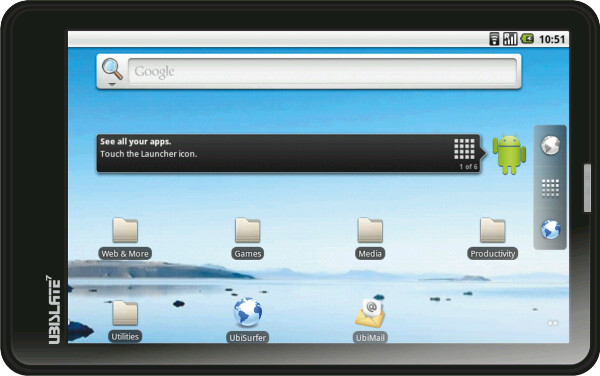Government of India launches the elusive $35 tablet, retail availability in November

When Tata Motors unveiled the Tata Nano—the $2500 car, the automative world was taken by storm. The engineering minds behind the cheapest family car pulled off something no other company could. The Government of India had similar plans for computers. The OLPC project showed promise but did not catch up. They (the organization behind OLPC) have however been able to attract some state governments to join them.

(Image courtesy AndroidOS.in)
Union Minister for Human Resourced Development in India, Kapil Sibal, talked about introducing a low cost tablet device for students. Everyone was skeptical. A $35 tablet that’s usable? Nobody had their hopes high. The project ran into troubles when HCL decided to pull out of the project. (They were going to manufacture the device.) Engineers at IIT Rajasthan were tasked with developing the device and a prototype was shown on national television.
A few days ago reports of the government finally launching the tablet on 5th October emerged. I wasn’t sure about the story; lo and behold, the rumors were true. Kapil Sibal officially launched the tablet. The device is called “Aakash” (Hindi for “Sky”) and is manufactured by British firm—DataWind—at their Hyderabad facility. Device specifications for the Aakash UbiSlate 7 are:
Hardware:
- 7” Resistive touch screen (800x480)
- Processor: 366 Mhz with Graphics accelerator and HD Video processor
- Memory (RAM): 256MB RAM
- Storage (Internal): 2GB Flash
- microSD card slot
- 1 USB port
- 3.5mm Audio in & out
- WiFi IEEE 802.11 a/b/g
- Up to 180 minutes on battery
Software:
- Android 2.2 Froyo
- Document formats supported: DOC, DOCX, PPT, PPTX, XLS, XLSX, ODT, ODP
- PDF viewer, Text editor
- Supported audio formats: MP3, AAC, AC3, WAV, WMA
- Supported video formats: MPEG2, MPEG4, AVI, FLV
The specifics of the program are:
- 500 students were handed the tablet on launch
- 100,000 more devices will be procured as part of the pilot
- 10 Million tablets at a per unit of price $36.6 to be purchased (via MediaNama)
Seamless connectivity to provide Internet connection on the devices for institutes was talked about. The government hopes to connect 416 universities and 20,000 colleges using BSNL as the service provider. The government claims 80% of the target connectivity has been achieved. The government has outlined details around content creation meant for the tablet’s use in education. Some of the guidelines to be followed are:
- It should be related to education delivery
- It should involve faculty from different institutions
- All IP (Intellectual Property) created under projects funded by this Mission will vest with MHRD
- All content should be created using open-source software
- All content created under this Mission is for open access by all and cannot be charged for in any way
One of the key announcements at the tablet launch was the commercial availability of Aakash. The government plans to make this tablet available through retail channels at an anticipated price of $60. The device will be called DataWind Ubislate.